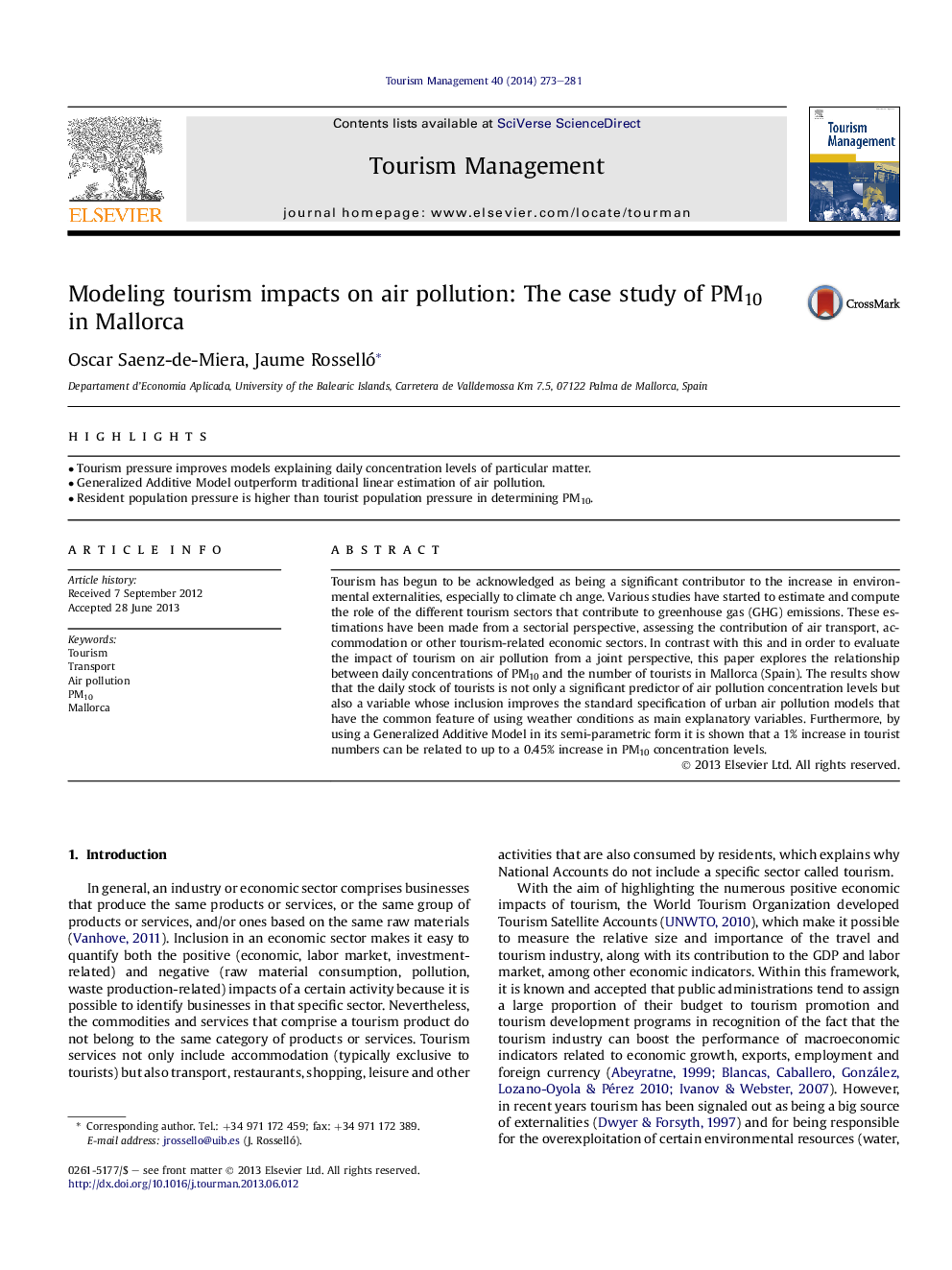| Article ID | Journal | Published Year | Pages | File Type |
|---|---|---|---|---|
| 7422336 | Tourism Management | 2014 | 9 Pages |
Abstract
Tourism has begun to be acknowledged as being a significant contributor to the increase in environmental externalities, especially to climate ch ange. Various studies have started to estimate and compute the role of the different tourism sectors that contribute to greenhouse gas (GHG) emissions. These estimations have been made from a sectorial perspective, assessing the contribution of air transport, accommodation or other tourism-related economic sectors. In contrast with this and in order to evaluate the impact of tourism on air pollution from a joint perspective, this paper explores the relationship between daily concentrations of PM10 and the number of tourists in Mallorca (Spain). The results show that the daily stock of tourists is not only a significant predictor of air pollution concentration levels but also a variable whose inclusion improves the standard specification of urban air pollution models that have the common feature of using weather conditions as main explanatory variables. Furthermore, by using a Generalized Additive Model in its semi-parametric form it is shown that a 1% increase in tourist numbers can be related to up to a 0.45% increase in PM10 concentration levels.
Related Topics
Social Sciences and Humanities
Business, Management and Accounting
Strategy and Management
Authors
Oscar Saenz-de-Miera, Jaume Rosselló,
